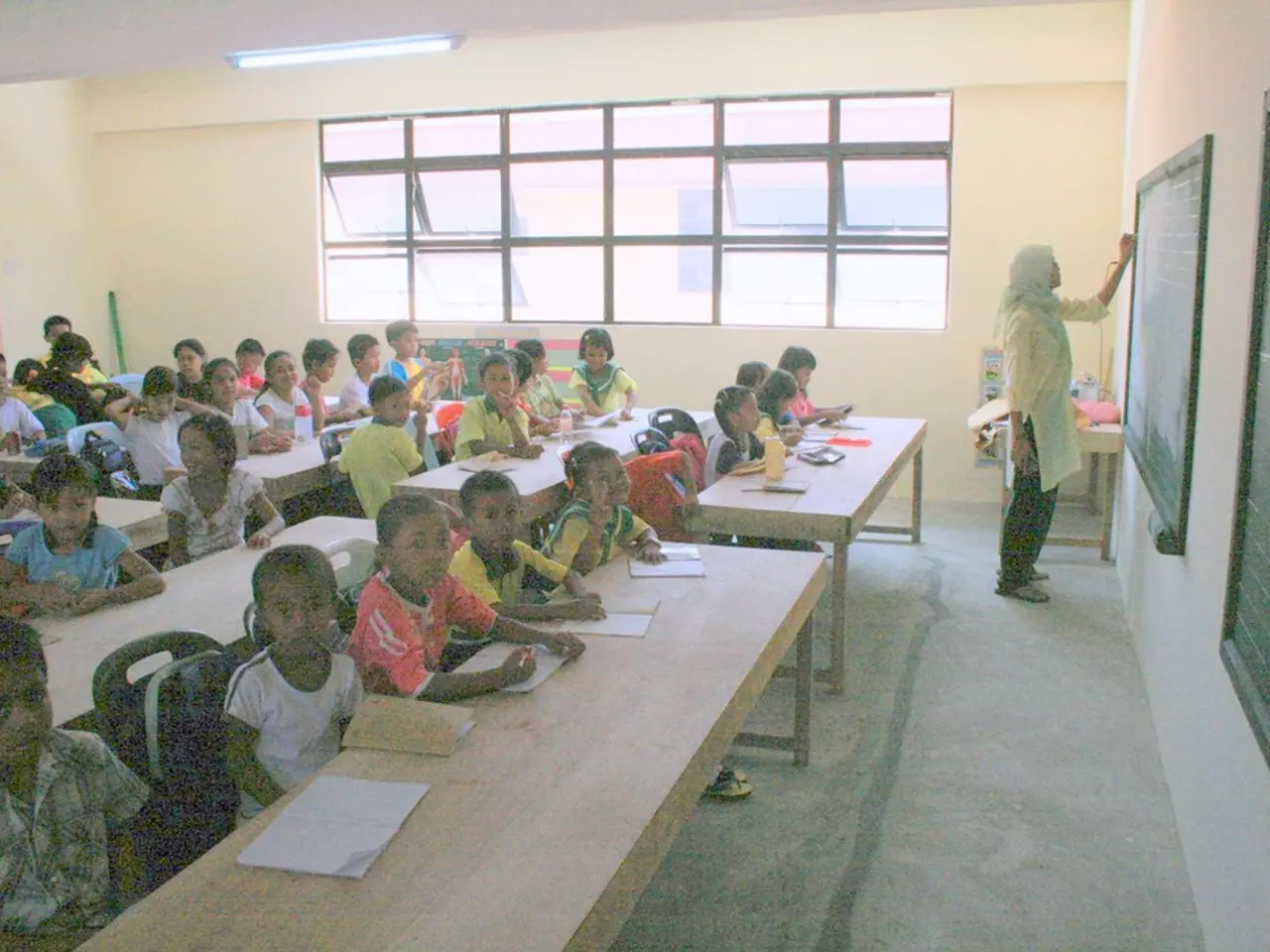Strategies for Crafting Examinations Resilient to Artificial Intelligence
In the modern era of technology, educators are constantly seeking ways to engage students and challenge them to think critically. One approach gaining traction is the design of AI-resistant assessments. By focusing on tasks that require real-time reasoning, original synthesis, personal reflection, and performance that AI cannot easily replicate or outsource, educators can foster deeper learning experiences.
One key strategy is the use of formative assessments, such as mini-whiteboards or digital tools requiring immediate individual responses during class. These tools help assess genuine understanding on the spot and identify misconceptions early [1].
Another approach is to flip project workflows, so that initial research happens outside class, but the critical higher-order tasks—analysis, synthesis, and creation—are done under supervision in class. This reduces reliance on AI-produced content and captures authentic student work [1].
Designing questions that demand analysis, synthesis, evaluation, and creation, rather than recall or summary, is also crucial. For example, asking students to evaluate causes with specific evidence or produce a combination of formats (written, visual, oral) that demonstrate integrated understanding [3].
Requiring students to explain, defend, or reflect on their work, either through brief videos, in-class discussions, or written reflections, is another effective method. This step targets students’ ability to articulate their reasoning, making it harder to submit AI-generated content without comprehension [3][4].
Incorporating tasks with situated stakes and real-world relevance, using community-based problems or performance tasks where students must reason and adapt in context, can also help make assignments AI-resistant [2].
Oral assessments, such as live presentations or interviews, can assess understanding directly and limit AI use, testing spontaneous critical thinking [5]. Instructors can also implement argumentation panels or peer teaching assignments, where students must present claims, respond to questions, and revise positions in dialogue with others, fostering deep engagement with content [2][5].
Promoting “AI-aware” artifacts, where students explicitly label what AI contributed versus their own thinking, reflect on AI tool choices, and analyze AI errors, can deepen metacognitive awareness and ethical engagement with AI [2].
Structuring assessments to explore students’ reasoning paths, including dead ends and evolution of ideas, and test their ability to apply reasoning to novel scenarios without prior prep, ensures assessments capture authentic cognitive development beyond polished AI output [4].
Incorporating personal experiences and local content into assignments can also help make them AI-resistant. For instance, in a history assignment, instructors can ask students to investigate the impact of World War II on their local community or a specific group of people in their region [6]. In a creative writing unit, students could be asked to develop a story that includes visual representations of key scenes or characters from their story [7].
Lastly, it's essential to provide clear guidelines for each assignment regarding the use of generative AI tools to ensure academic integrity and enhance student learning [10]. Incorporating multiple modes of expression can help students engage with the content on deeper levels [8].
By implementing these strategies, educators can create AI-resistant assessments that promote critical thinking and deep engagement, fostering a learning environment that values authenticity, iterative reasoning, personal insight, real-time engagement, and contextual application—features that AI cannot fully substitute.
- In the modern era, students can be challenged to think critically through AI-resistant assessments that focus on real-time reasoning, original synthesis, personal reflection, and performance, fostering deeper learning experiences.
- Effective strategies include formative assessments using digital tools or immediate individual responses, flipping project workflows, and designing questions that demand analysis, synthesis, evaluation, and creation.
- Encouraging students to explain, defend, or reflect on their work, either by brief videos, in-class discussions, or written reflections, helps target their ability to articulate their reasoning, making it harder to submit AI-generated content without comprehension.
- Incorporating tasks with situated stakes, such as community-based problems or performance tasks, oral assessments, argumentation panels, peer teaching assignments, and personal experiences into assignments can make them more AI-resistant, promoting authentic cognitive development.




